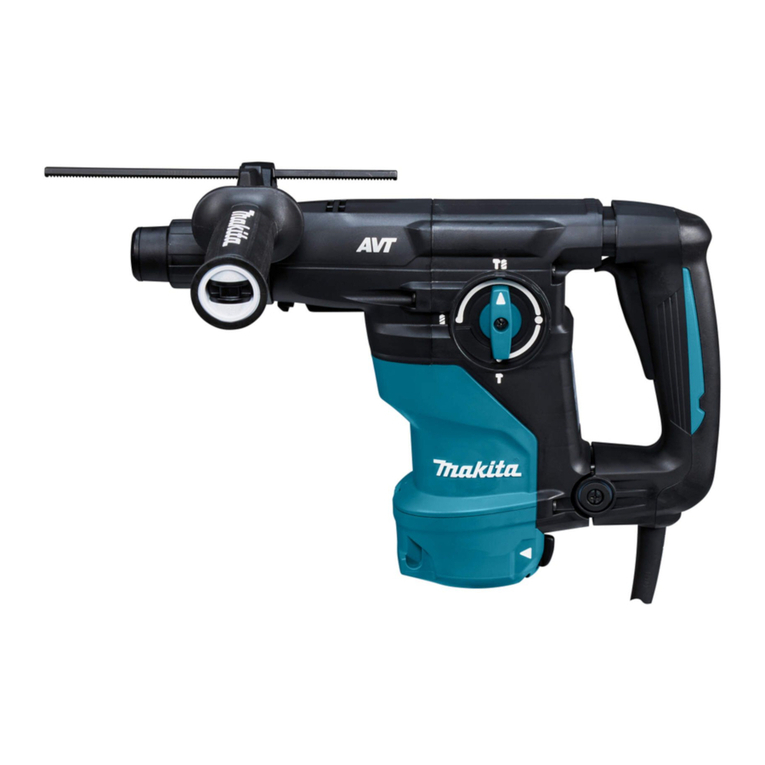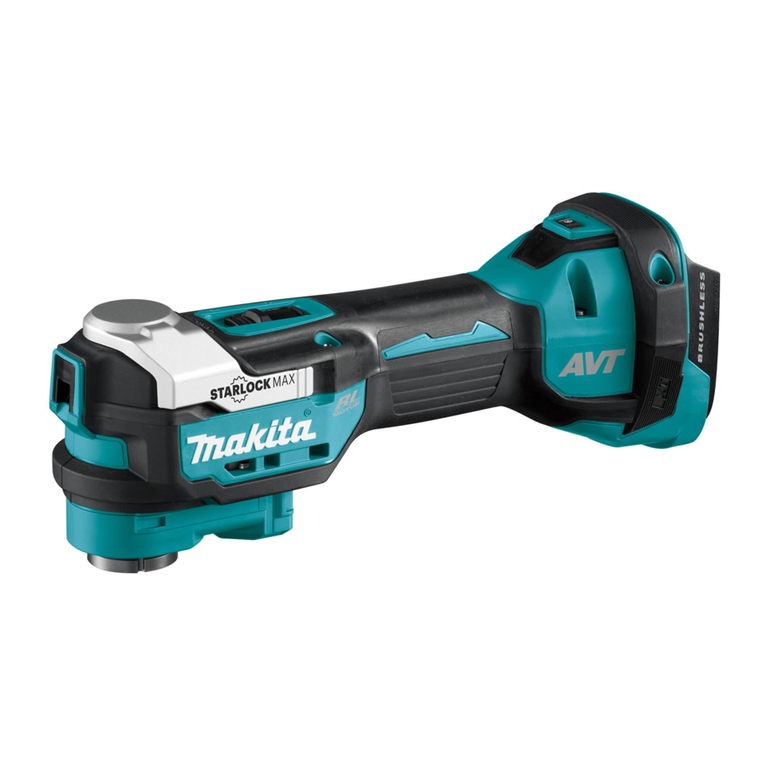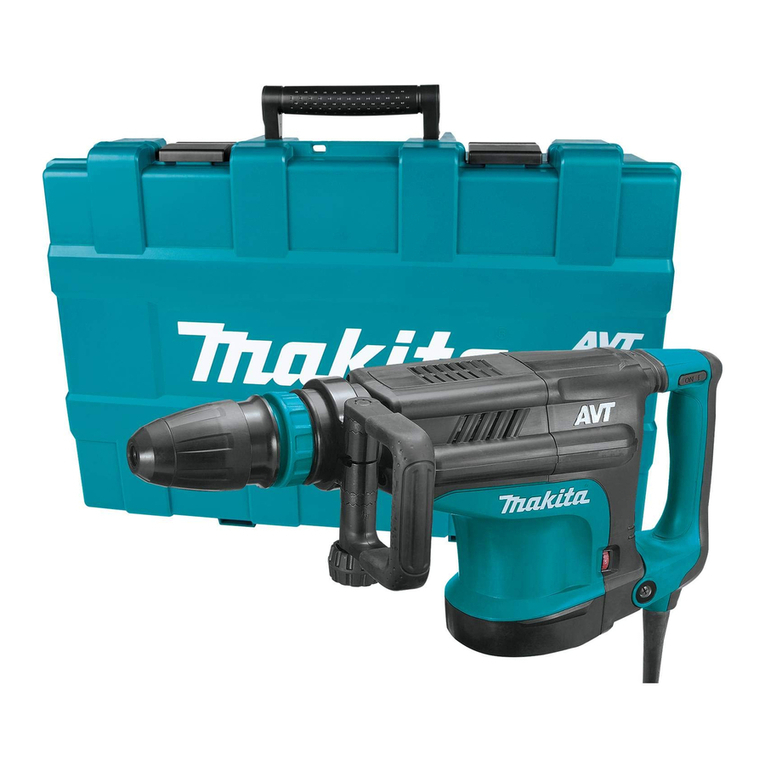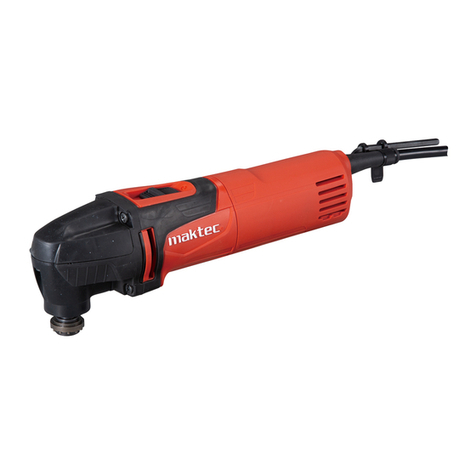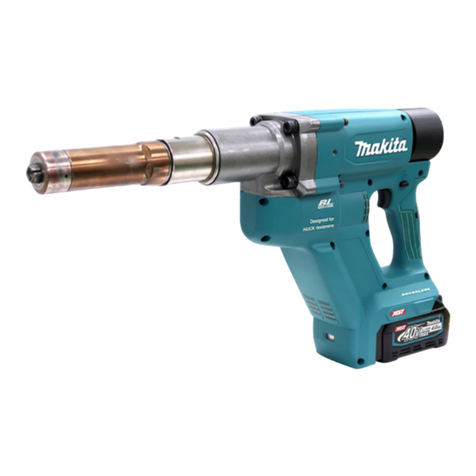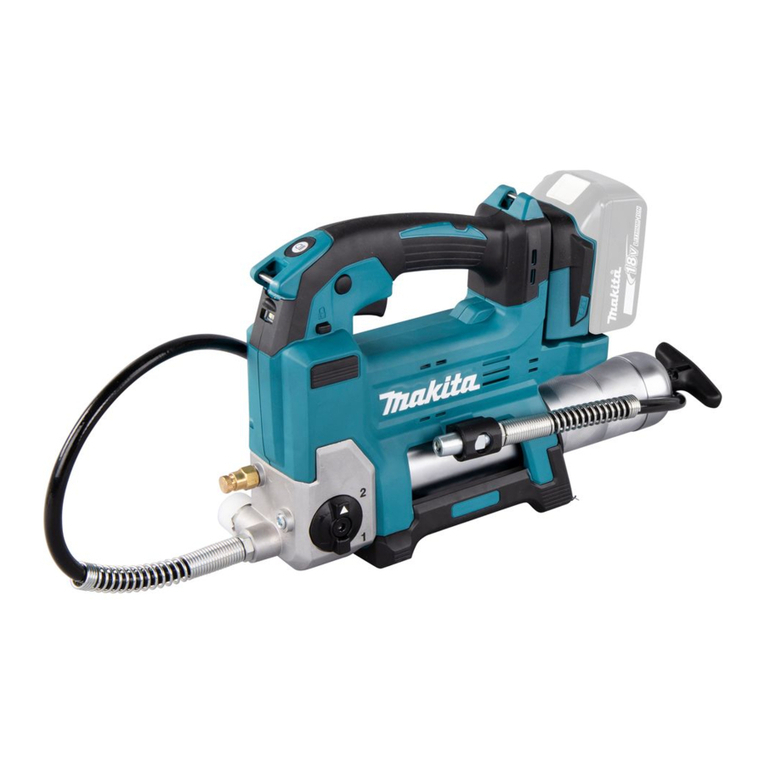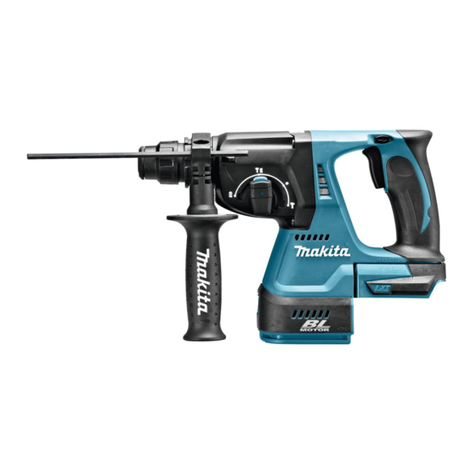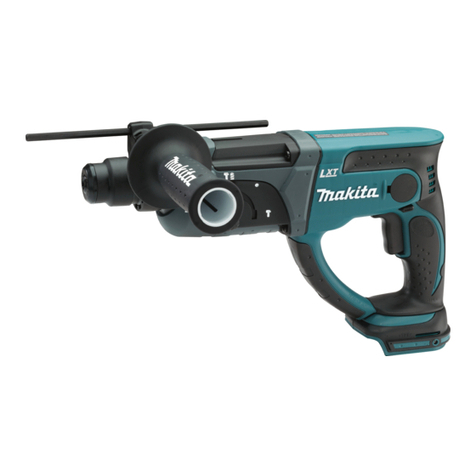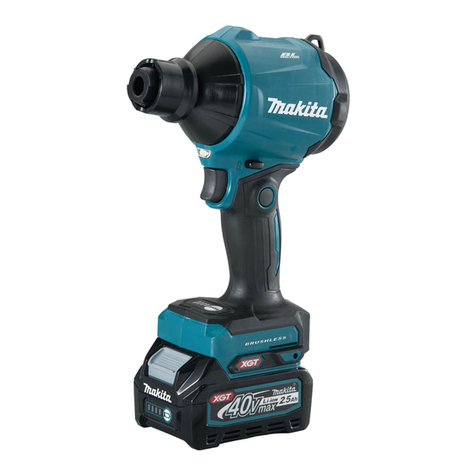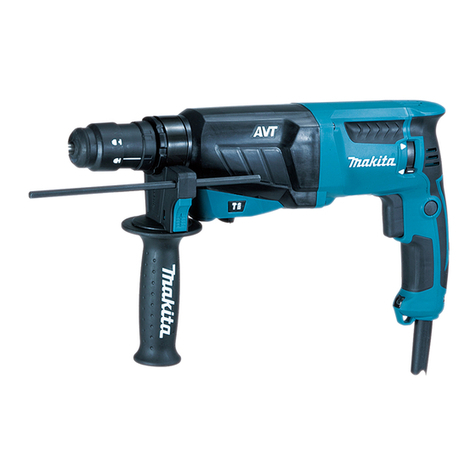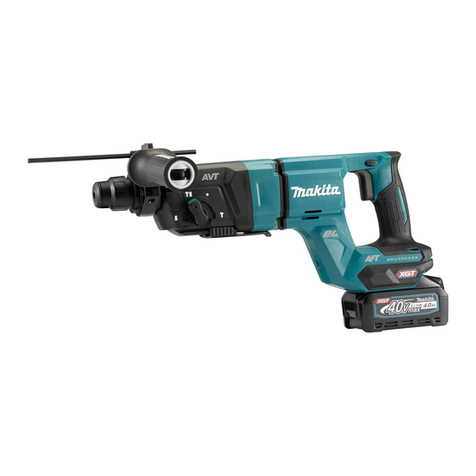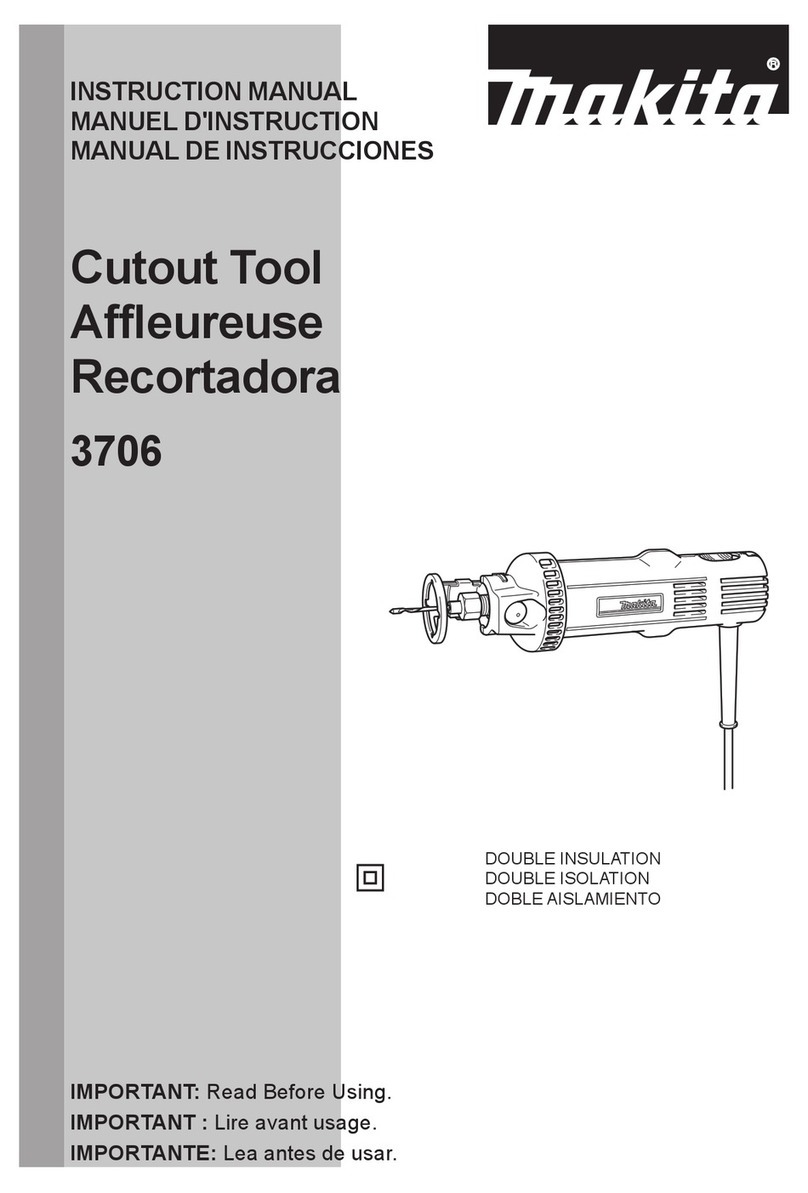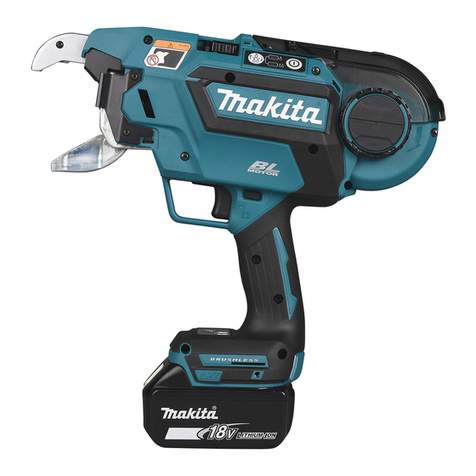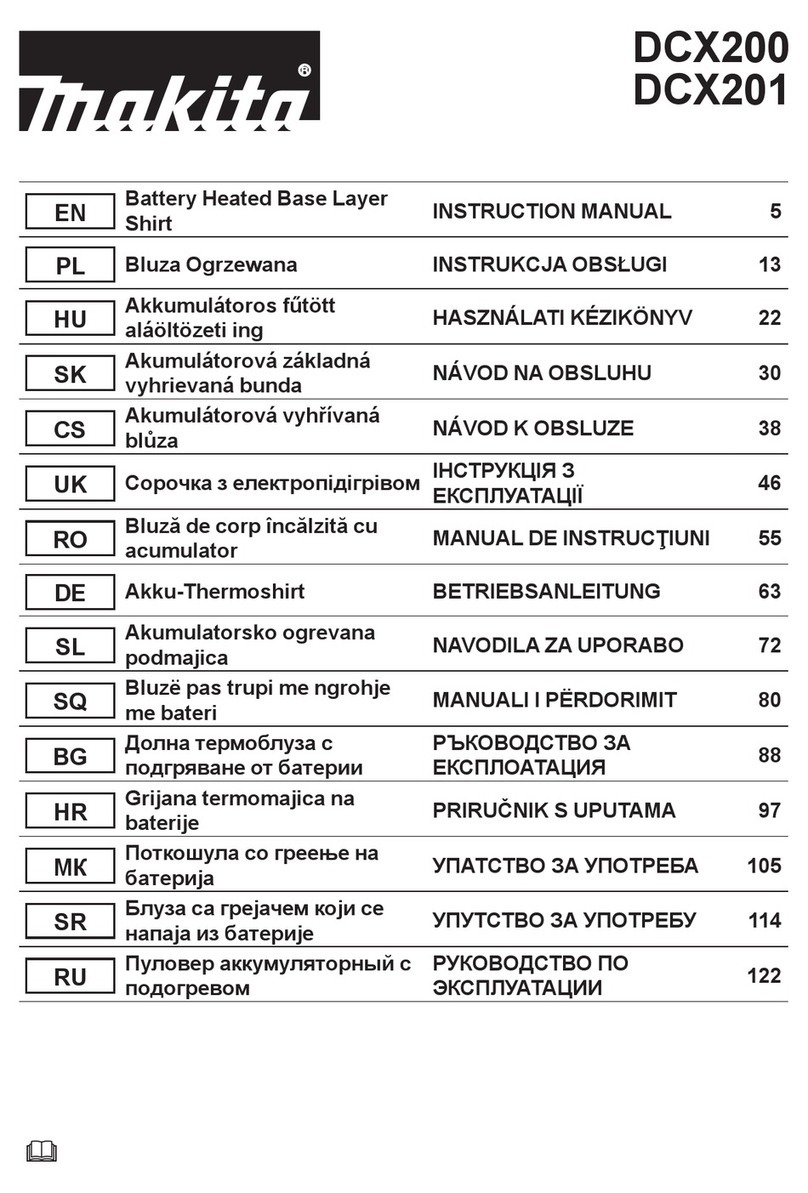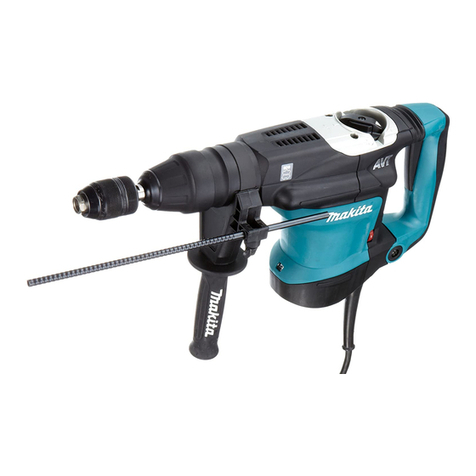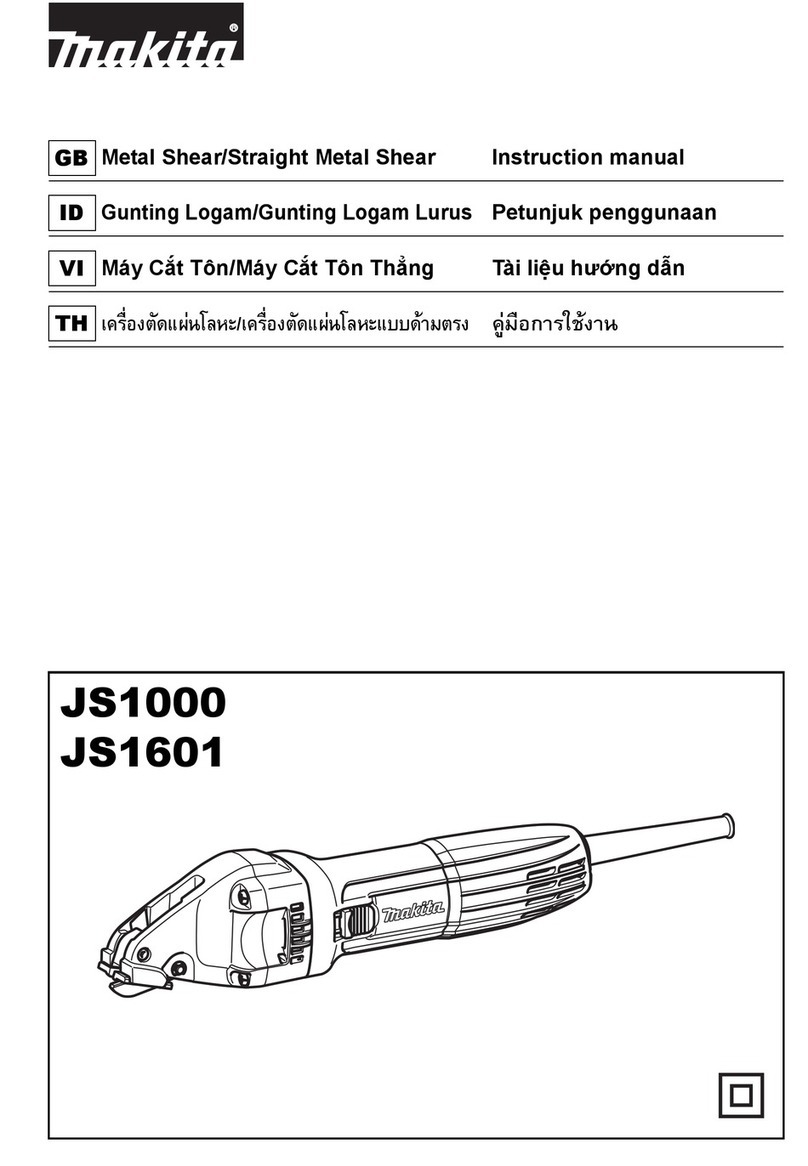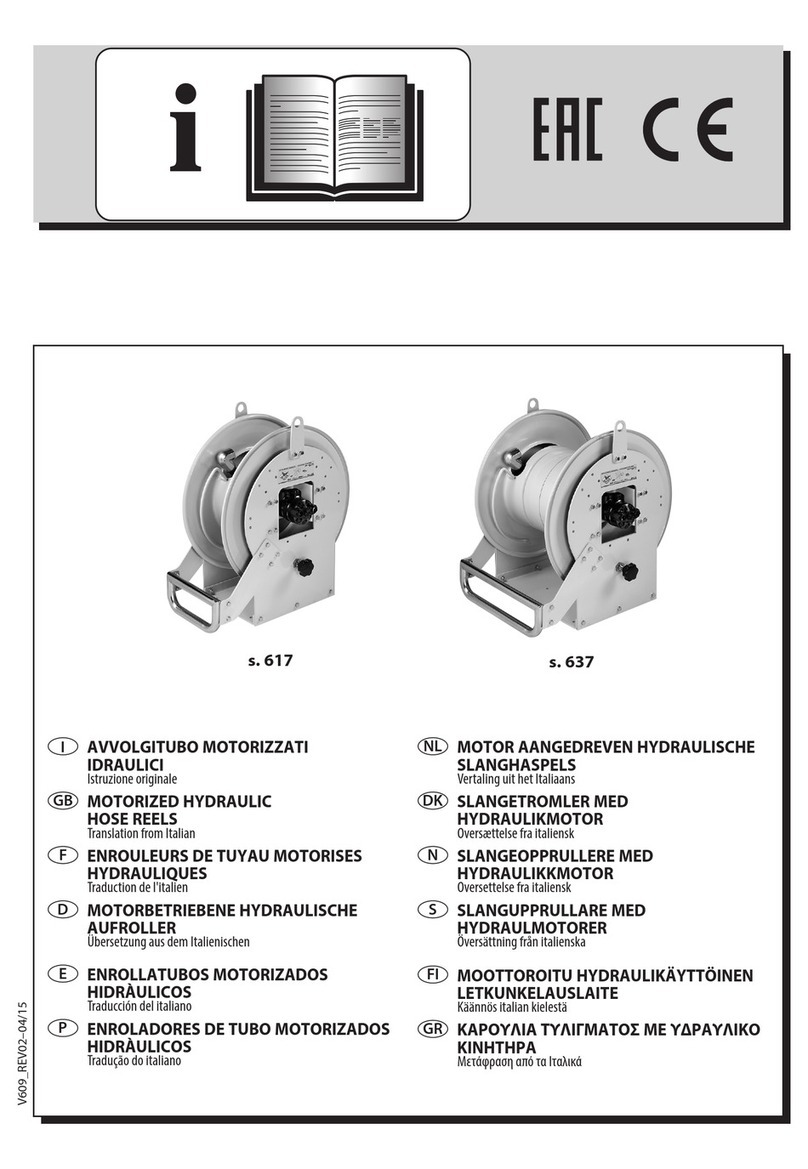
9ENGLISH
Router safety warnings
1. Hold the power tool by insulated gripping
surfaces only, because the cutter may contact
its own cord. Cutting a "live" wire may make
exposed metal parts of the power tool "live" and
could give the operator an electric shock.
2.
Use clamps or another practical way to secure
and support the workpiece to a stable platform.
Holding the work by your hand or against the body
leaves it unstable and may lead to loss of control.
3. The cutter bit shank must match the designed
collet chuck.
4. Only use a bit that is rated at least equal to the
maximum speed marked on the tool.
5. Wear hearing protection during extended
period of operation.
6. Handle the router bits very carefully.
7. Check the router bit carefully for cracks or
damage before operation. Replace cracked or
damaged bit immediately.
8. Avoid cutting nails. Inspect for and remove all
nails from the workpiece before operation.
9. Hold the tool rmly with both hands.
10. Keep hands away from rotating parts.
11. Make sure the router bit is not contacting the
workpiece before the switch is turned on.
12. Before using the tool on an actual workpiece,
let it run for a while. Watch for vibration or
wobbling that could indicate improperly
installed bit.
13. Be careful of the router bit rotating direction
and the feed direction.
14. Do not leave the tool running. Operate the tool
only when hand-held.
15. Always switch o and wait for the router bit to
come to a complete stop before removing the
tool from workpiece.
16. Do not touch the router bit immediately after
operation; it may be extremely hot and could
burn your skin.
17. Do not smear the tool base carelessly with
thinner, gasoline, oil or the like. They may
cause cracks in the tool base.
18.
Some material contains chemicals which may be
toxic. Take caution to prevent dust inhalation and
skin contact. Follow material supplier safety data.
19.
Always use the correct dust mask/respirator for
the material and application you are working with.
20. Place the tool on stable area. Otherwise falling
accident may occur and cause an injury.
21. Keep cord away from your foot or any objects.
Otherwise an entangled cord may cause a falling
accident and result in personal injury.
SAVE THESE INSTRUCTIONS.
WARNING: DO NOT let comfort or familiarity
with product (gained from repeated use) replace
strict adherence to safety rules for the subject
product. MISUSE or failure to follow the safety
rules stated in this instruction manual may cause
serious personal injury.
FUNCTIONALDESCRIPTION
CAUTION: Always be sure that the tool is
switched o and unplugged before adjusting or
checking function on the tool.
Adjusting the depth of cut
Place the tool on a at surface. Loosen the lock lever and lower
the tool body until the router bit just touches the at surface.
Tighten the lock lever to lock the tool body. While pressing the
fast-feed button, move the stopper pole up or down until the
desired depth of cut is obtained. Minute depth adjustments can
be obtained by turning the stopper pole (1.5 mm (1/16″) per turn).
► Fig.1:
1. Nylon nut 2. Stopper pole 3. Fast-feed button
4. Adjusting hex bolt 5. Stopper block 6. Lock lever
CAUTION: The depth of cut should not be
more than 20 mm (13/16″) at a pass when cutting
grooves. For extra-deep grooving operations,
make two or three passes with progressively
deeper router bit settings.
Nylon nut
For tool without the knob
The upper limit of the tool body can be adjusted by
turning the nylon nut. Do not lower the nylon nut too low.
The router bit will protrude dangerously.
For tool with the knob
By turning the knob, the upper limit of the tool body can be adjusted.
When the tip of the router bit is retracted more than required in rela-
tion to the base plate surface, turn the knob to lower the upper limit.
► Fig.2: 1. Knob
CAUTION:
Since excessive cutting may cause
overload of the motor or diculty in controlling the tool,
the depth of cut should not be more than 20 mm (13/16″)
at a pass when cutting grooves. When you wish to cut
grooves more than 20 mm (13/16″) deep, make several
passes with progressively deeper router bit settings.
CAUTION: Do not lower the knob too low. The
router bit will protrude dangerously.
Stopper block
As the stopper block has three adjusting hex bolts which
raise or lower 0.8 mm per turn, you can easily obtain three
dierent depths of cut without readjusting the stopper pole.
► Fig.3: 1. Stopper pole 2. Adjusting hex bolt
3. Stopper block
Adjust the lowest adjusting hex bolt to obtain the deepest
depth of cut, following the method of "Adjusting depth of cut".
Adjust the two remaining adjusting hex bolts to obtain shal-
lower depths of cut. The dierences in height of these adjust-
ing hex bolts are equal to the dierences in depths of cut.
To adjust the adjusting hex bolts, turn the adjusting hex
bolts with a screwdriver or wrench. The stopper block is
also convenient for making three passes with progres-
sively deeper bit settings when cutting deep grooves.

